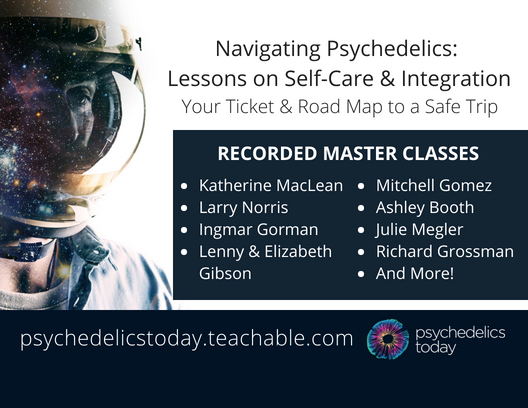In this episode, Kyle and Joe host Rebecca Ann Hill and David Jay Brown, Authors of the book, Women of Visionary Art. The book showcases the work and inspiration of female artists such as Josephine Wall, Allison Grey, Amanda Sage, Martina Hoffman, Carolyn Mary Kleefeld and many others.
3 Key Points:
- Rebecca Ann Hill and David Jay Brown are co-authors of the book, Women of Visionary Art, which includes discussions with 18 female artists.
- The book and the episode are an exploration of the role that dreaming, psychedelic experiences, and mystical visions play in visionary art.
- There is a strong need for a balancing of masculine and feminine energies. Females tend to be more nurturing and more cooperative, and it's exactly the factors that are missing in our current world and are causing problems of greed.
Support the show
- Patreon
- Leave us a review on iTunes
- Share us with your friends – favorite podcast, etc
- Join our Facebook group - Psychedelics Today group – Find the others and create community.
Navigating Psychedelics
Show Notes
About David
- David’s background is in Psychobiology, the interface between psychology and biology
- He spent 10-15 years working in neuroscience and research labs
- His interest in Neuroscience came from his experience as a teenager, experimenting with psychedelics
- He wrote his first book, The Science of Psychedelics, about 10 years ago
- David mentions that the psychedelic renaissance has allowed him to write openly about psychedelic topics that he’s been preparing his whole life researching for
About Rebecca
- aka Molly Moon Sparkles
- She has a huge creative drive
- She is currently studying psychology and is playing in the art program
- She is fascinated by entheogens, plant medicines and psychedelic compounds
- She is a painter and is working on the Molly Moon Magick Series that focuses on the divine feminine
- She wrote and illustrated the book Ecstatic Love, Lost Dreams and Mystic Visions
Psychedelics and Creativity
- There is strong evidence that psychedelics improve creativity
Music, art, technology, so many great things are influenced by psychedelics
Putting the Book Together
- David was so fascinated with the visions he would see on psychedelics and wished that he had the talent to portray it through artwork, and then he began to see artists bring these visions to life
- He also saw a lot of gender inequality, that there were more men than women in the visionary art space
- It urged him to highlight the under recognized women in visionary art
- Rebecca was experimenting with other realms with plant medicines and psychedelic compounds
- She says her consciousness was so drastically different from any other time in her life, and she started painting her psychedelic experiences
- This led her to begin building community with other artists who shared the same ‘vision’ as her
- She said that the psychedelic experience has so much feminine nature to it that wasn't being voiced
- “We are going through a serious ecological crisis right now and the teachings behind the psychedelic experience is to heal the collective and help climate change” - Rebecca
- Stanley Krippner conducted a survey of artists and psychedelics
The Imbalance of Masculine and Feminine
- There is an uprising of feminism with the “Me Too” movement, women in congress, women’s marches
- Our species has been so dominated by men and we need the nurturing and caring aspects of the feminine perspective
Surprising Aspects of the Women
- The most surprising aspect is how much in common the women had
- David says it was beautiful how well each artist was connected to each other through their stories
- Laura Holden is completely self taught
- There were two women from the book that had never touched a psychedelic substance
- They were inspired through dreams and daydreams
- The psychedelic experience not only inspires the artwork, but it creates a new way of viewing artwork
- Kyle mentions that he always wished he could record his dreams
- Joe says he has been seeing research around capturing visual or imagined imagery
Discovering the Artists
- David discovered most of the artists that he had not previously known through the community Rebecca had been a part of as visionary artists
COSM and Entheon
- August 3rd, Rebecca and David are giving a presentation as COSM in New York
- Entheon, the Sanctuary for Visual art may be open by them
- Entheon will have workshops, painting classes, rooms to stay in, full moon ceremonies, etc.
- It will be an art sanctuary, a church with a spiritual and psychedelic essence
- Visionary art is getting into museums and becoming a recognized art form
The Desperate Need for Balance
- Terrence McKenna told David that early on in human civilization, men didn't understand the role that sex had in creating babies
- The power of reproduction was within women and sex was something else
- Once men began thinking that they were responsible for the generation of life, they starting saying its “my baby” its “my wife” instead of ‘our’ baby or the community’s baby. It kept developing into “my child” into “my country”, “MY”.
- Then people started using less psychedelics and started consuming more alcohol and now everything is an over exaggerated male dominance
- “Females tend to be more nurturing and more cooperative, and it's exactly the factors that are missing in our current world and are causing problems of greed. It could be balanced and harmonized with more feminine energy.” - David
- There is a crucial imbalance from male and female in history alone
- But more than an imbalance between just males and females, it's about an imbalance of masculine and feminine energies
- Each of us, male and females have both a masculine and feminine energy
- We can see the masculine and feminine imbalance in the world and our planet right now. We don't need to shift to a goddess worshiping planet, but we just need to be back in balance and bring more feminine energy of nurturing and compassion and caring and healing
- Penny (an artist highlighted in the book) mentions about Sandos giving LSD to researchers who gave it to artists
Getting Involved
- “If you want to get involved in painting, dancing, making jewelry, clothing, gardening, don't wait. Do it. If you are true to yourself and your own inner visions, you will succeed” - Rebecca
- One thing all artists have in common is fear and insecurity, so you can't let it hinder you from beginning
Final Thoughts
- Artists like Android Jones are doing visionary artwork in virtual reality mediums
- David thinks visionary artwork will become only even more interactive and immersive spaces
- We need to find a more yin-yang balance between masculine and feminine
Links
Women of Visionary Art (Amazon)
Women of Visionary Art (Inner Traditions)
David’s Site
Rebecca’s Site
MollyMoonSparkle blog
About Rebecca

Rebecca Ann Hill (AKA Molly Moon Sparkle), is a visual artist with a wide range of experience in different creative mediums. She is the co-author and illustrator of “Ecstatic Love, Lost Dreams & Mystic Visions”, as well as “Women of Visionary Art.” Primarily a painter, she is creating a new series entitled “Molly Moon Magick,” and her other projects include dancing with “Gold Town Burlesque,” writing a blog -“Go Ask Molly”- and working on a new book about her spiritual awakening.
About David
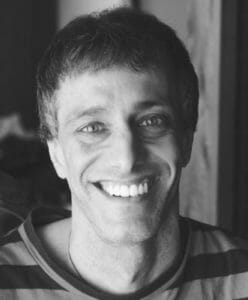
David Jay Brown is the author of Dreaming Wide Awake: Lucid Dreaming, Shamanic Healing and Psychedelics, and The New Science of Psychedelics: At the Nexus of Culture, Consciousness, and Spirituality. He is also the coauthor of five other bestselling volumes of interviews with leading-edge thinkers, Mavericks of the Mind, Voices from the Edge, Conversations on the Edge of the Apocalypse, Mavericks of Medicine, Frontiers of Psychedelic Consciousness, and of Women of Visionary Art. Additionally, Brown is the author of two science fiction novels,Brainchild and Virus, and he is the coauthor of the health science book Detox with Oral Chelation. Brown holds a master’s degree in psychobiology from New York University, and was responsible for the California-based research in two of British biologist Rupert Sheldrake’s books on unexplained phenomena in science: Dogs That Know When Their Owners Are Coming Home and The Sense of Being Stared At. His work has appeared in numerous magazines, including Wired, Discover, and Scientific American, and he was the Senior Editor of the special edition, themed MAPS (Multidisciplinary Association for Psychedelic Studies) Bulletins from 2007 to 2012. In 2011, 2012, and 2013 Brown was voted “Best Writer” in the annual Good Times and Santa Cruz Weekly’s “Best of Santa Cruz” polls, and his news stories have been picked up by The Huffington Post and CBS News.
Download
In this episode, hosts Kyle and Joe interview Balázs Szigeti, PhD and David Erritzoe, PhD to discuss the self-blinded microdosing study in collaboration with the Imperial College London.
In this episode, they explore the self-blinding study and it’s pros and limitations, with the aim to collect data on microdosing and its possible benefits.
3 Key Points:
- Microdosing (LSD) has the least amount of research so far among research on drugs like Psilocybin, MDMA and Ketamine.
- This microdosing study includes a procedure on how self experimenters can implement placebo control. This will help determine whether microdosers feel benefits due to the placebo effect or because of the pharmacological action of the microdose.
- Just because microdosing may have a placebo effect (the way a user feels while taking it) it may actually have benefits that one cannot necessarily ‘feel’ (users may become more creative, have better problem solving skills, etc).
Support the show
- Patreon
- Leave us a review on iTunes
- Share us with your friends – favorite podcast, etc
- Join our Facebook group - Psychedelics Today group – Find the others and create community.
Navigating Psychedelics
Show Notes
About Balázs
- Balazs attended his undergrad in the UK at Imperial College and studied Theoretical Physics
- He moved to Scotland to get his PhD in Computational Neuroscience
- He became interested in psychedelics via the Global Drug Survey
- He was doing MDMA research and then the microdosing project came to him
About David
- He is a medical doctor and works in clinical psychology doing research
- He does brain imaging and his background has been in addiction, depression and schizophrenia
- He did his postdoc at Imperial and worked with Robert Carhart Harris
- He worked in a clinical trial working with people of treatment resistant depression
- He is currently working on an online survey for microdosing
Psychedelic Medicine
- MDMA for PTSD is the most advanced in terms of available scientific evidence for psychedelic medicine
- There is already a big gap in psilocybin vs MDMA for treatment
- There isn't much research on microdosing yet
- In order to do research on microdosing, you'd have to bring in a ‘patient’ and have them in the lab for many hours at a time, very frequently, and it's not practical
The Microdosing Study
- In this microdosing study, they are testing cognitive function
- The user will have to fill out a questionnaire throughout the duration of the microdose
- There were a lot of things, very political for the downfall of psychedelic science
- When the double-blind method was introduced for science, it used methods that would have compromised the ‘setting’ of taking psychedelics
- There is a manual that the users have to follow for the setup process
- Its a semi-randomized process where they take the microdose over 4 weeks and it may be either the psychedelic or a placebo
- It works on a method of a dose hidden in a capsule assigned to a QR code, where the user doesn't know what they take until the end of the study
- This is a study inviting people that plan to microdose a blotter based psychedelic
- Its a hands-off study of observation, based on a users own plan on taking the substance
Limitations of the Study
- Its half-way between a clinical study and an observational study
- They aren't sending the users the LSD, they are just providing the platform for the users to share their experience on
- In this trial, the flaw is that the research team doesn't know the dose size of the blotter the user takes, it could start as a 100mg, more, less. Its a variable that cannot be controlled
- The fix would be to have the LSD sent to the lab, tested for dose size, and then sent back to the user (anonymously), but since it's illegal it cannot be done
- It's also hard to determine even distribution of a blotter into microdose size
- They don't know if the user is cutting the blotter paper like a pie or in squares
- Also, because the drug is being bought on the black market, they wont know if there are adulterants in the drug unless the user tests the drug themselves
- David and Balázs also say that based on current findings, most LSD tested is pure LSD, where a drug like MDMA is more common to contain an adulterant
- They do have plans to extend the study to include plant based psychedelics and volumetric dosing
What is a Psychedelic Microdose?
- Psychedelic microdosing is not the same as Pharmacological microdosing
- A microdose in pharmacological context is 1/100th of a dose, where a psychedelic microdose is more like 1/10th of a dose
Is Microdosing Worth it?
- People like David Nichols and Ben Sessa think microdosing is pointless
- It could be that microdosing is a glorified placebo effect
- Most people who are microdosing have had previous experience with psychedelics
- People are doing it because they believe there is a benefit that comes from it
- The placebo control is the most important component of this self-blinded method
- People say that microdosing stimulates their creativity, but creativity is hard to measure
- One thing they could measure is personality through a personality assessment
- One thing that has been studied is an increase in the ‘Openness’ personality trait after psychedelic use
- The flaw is that a personality test is a person answering questions about themselves
Current Findings
- The benefit of this study, is it doesn't take people out of their natural, personal setting
- Based on the feedback already received, the users are getting their guess right only half of the time, on whether it is the microdose or the placebo
- Just because microdosing may have a placebo effect (the way they feel while taking it) it may actually have benefits (users may be more creative, have better problem solving skills, etc).
- Homeopathy is widely believed to be a placebo effect in the scientific community, but the homeopathy is continuing to grow
Links
About Balázs Szigeti, PhD
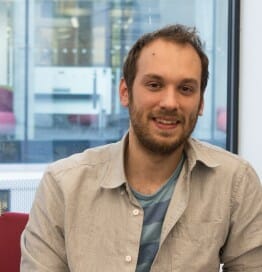
Dr. Balazs Szigeti has studied theoretical physics at Imperial College, but turned towards neuroscience for his PhD studies at the University of Edinburgh. His main work is about the behavioural neuroscience of invertebrates, but he has a diverse scientific portfolio that includes computational neuroscience and driving forward the OpenWorm open science initiative. Balazs is also the editor of the Dose of Science blog that is published in collaboration with the Drugreporter website. Dose of Science discusses and critically assesses scientific studies about recreational drugs. Recently Balazs has started a collaboration with the Global Drug Survey to quantitatively compare the dose of recreational users of various drugs with the scientific literature.
About David Erritzoe, PhD
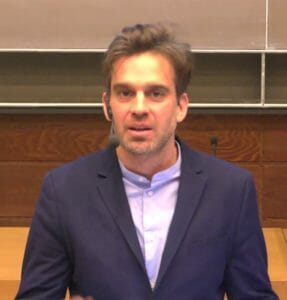
Dr. David Erritzoe is qualified as a medical doctor from Copenhagen University Medical School and currently holds an Academic Clinical Lectureship in Psychiatry at Imperial College London. Alongside his clinical training in medicine/psychiatry, David has been involved in psychopharmacological research, using brain-imaging techniques such as PET and MRI. He has conducted post-doc imaging research in the neurobiology of addictions and major depression. Together with Prof Nutt and Dr Carhart-Harris he is also investigating the neurobiology and therapeutic potential of MDMA and classic psychedelics.
In this episode, Joe interviews Nathan Sepeda, a Research Coordinator at Johns Hopkins. Joe and Nathan cover topics on 5-MEO-DMT research and survey studies, the difference between synthetic and toad sourced 5-MEO-DMT, the sustainability of the Bufo Alvarius toad, and the benefits of a proper facilitator.
3 Key Points:
- 5-MEO-DMT is starting to gain traction in the research world. The conversation continues on whether the synthetic 5-MEO-DMT experience is any different from a 5-MEO-DMT experience sourced from the toad venom.
- As the popularity of 5-MEO-DMT increases, concerns about the wellbeing and sustainability of the Bufo Alvarius toad also increases.
- Proper facilitation has been shown to affect a person’s experience on a substance like 5-MEO-DMT. The use of a practitioner, finding the substance from a reputable source, and integration all play a critical role in the user's experience.
Support the show
- Patreon
- Leave us a review on iTunes
- Share us with your friends – favorite podcast, etc
- Join our Facebook group - Psychedelics Today group – Find the others and create community.
Navigating Psychedelics
Show Notes
5-MEO-DMT
- Joe found out about Nathan Sepeda and the work being done on 5-MEO-DMT after Johns Hopkins released a poster on 5-MEO-DMT
- Alan Davis put together a survey about people’s 5-MEO-DMT experiences
- Half of the use was recreational, and then the other half of survey participants used more of a therapeutic approach set and setting including a sitter and integration
- The study found that the more structured the 5-MEO-DMT experience was around set and setting, the more often participants reported a more mystical experience as well as a lower likelihood of having a difficult experience
- The survey only looked at synthetic 5-MEO-DMT
- Using 5-MEO-DMT from a toad also runs the risk of the other toad venom constituents
- Joe said the first time he heard about data on 5-MEO-DMT was at the Oakland Psychedelic Science Conference in 2017
- Stan Grof had a keynote saying that 5-MEO-DMT was the future of psychiatry
Toad Conservation
- The Bufo Alvarius toad’s population is increasingly declining
- Joe says he knows someone who lives on the Mexican border in the Sonoran desert, and he would have toads jump into his house all the time
- He doesn't even see them anymore
- Joe also mentions the toads flocking to the UV street lights, and people scooping them up or even running them over
- “How do we do less harm to living things and treat our environment better?” - Joe
Nathan’s Role at Hopkins
- Nathan is the Research Coordinator of Psychedelic Studies at Johns Hopkins
- He works as an Assistant Facilitator (sitter) for the psychoactive drug sessions
- He is involved in Psilocybin studies (currently the depression study)
- He says he is grateful to be a part of the research, seeing people change in a matter of days from the help of the substances
- Nathan has a background in Psychology and Neuroscience
- Mary Cosimano is the primary facilitator for all of the studies at Johns Hopkins
- His training consisted of mock sessions, ways to ask/answer questions, and overall hold the space
- A lot of people will describe their experience being the most spiritual experience of their life
- Joe asks about upset stomach with synthetic 5-MEO-DMT
- Nathan responds saying they ask patients to eat a light breakfast, but he never really sees upset stomach with synthetic 5-MEO
Proper Facilitation
- The use of a practitioner and finding the substance from a reputable source are the two biggest factors in having a great experience, along with integration
- Nathan says that these findings are preliminary but they are a great start to data on the substance and its use
- Joe says he is cautious about the religious affiliation people prescribe to their experience with these substances
- It can get out of hand, there are “shamans” that taze people or throw buckets of cold water on their patients when they are on the substance
- Waterboarding, sexual assault, all of these things speak to the value of screening practitioners
- Joe has heard about a facilitator using an extremely high amount of 5-MEO-DMT on his patients, far above the effective dose
- Joe mentions a story about a “shaman” who was to facilitate a session. The participant thought they were going to do standard DMT, and the shaman gave them 5-MEO-DMT instead (without the users consent)
- Joe suggests that just because you know a reputable source for a substance, doesn't mean they are a good facilitator
Final Thoughts
- People can find information on the study at clinicaltrials.gov
- People can apply by contacting Nathan’s team directly
- They will have room for healthy volunteers in healthy volunteer studies in the future
- They are currently working on “insight surveys” that are surveys asking people about their psychedelic experiences
Links
Hopkins Psychedelic Research Website
About Nathan Sepeda
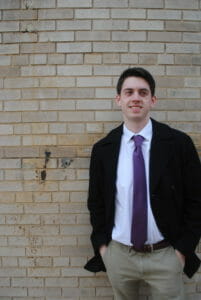
Nathan Sepeda is an assistant facilitator (or guide) for psychoactive drug sessions and research coordinator for the Johns Hopkins Psychedelic Research Unit. Nathan earned an undergraduate degree from the University of Minnesota studying psychology and neuroscience. His interests in addiction and mood disorders, in combination with the promising research with psychedelics, have led Nathan to Dr. Roland Griffiths’ lab. Nathan is involved in a number of projects investigating the effects of various psychedelic substances, including psilocybin, salvinorin-A, and 5-MeO-DMT.
In this episode, Kyle interviews Dr. Jenifer Talley, Clinical Psychologist and Assistant Director at the Center for Optimal Living that does harm reduction in psychotherapy. Topics include the current stigma of substance use and the benefits of using a harm reduction approach.
3 Key Points:
- Dr. Jenifer Talley is a Clinical Psychologist at the Center for Optimal Living who practices harm reduction with her psychotherapy clients.
- Substance abuse is typically a symptom of a bigger issue. Jenifer uses a model called the 7 Therapeutic Tasks that helps build a safe relationship with her clients in adjusting their substance abuse mindset.
- There is a stigma on substance use, and shifting away from the current model into a harm reduction framework could help users be more receptive to change and healing.
Support the show
- Patreon
- Leave us a review on iTunes
- Share us with your friends – favorite podcast, etc
- Join our Facebook group - Psychedelics Today group – Find the others and create community.
Navigating Psychedelics
Show Notes
About Dr. Jenifer Talley
- Jenifer grew up outside of DC and moved up to New York area for her internship and was working with female survivors of trauma and substance use at St. Luke's Hospital.
- Dr. Tatarsky has founded the Center for Optimal Living and she is the Assistant Director
- The Center for Optimal Living is known best for their work with substance use and harm reduction
Substance Abuse
- Jenifer says that 'abstinence only' or 'abstinence first' approach doesn't really work
- It's all about determining the relationship the patients want to have with a substance
- People really struggle with vulnerability and trauma is a player as to why someone wants to use a substance
- “Substance use is a symptom of a bigger issue” - Jenifer
- It's unfair to ask someone to change without asking the whole system to change
7 Therapeutic Tasks
- The Therapeutic Alliance - Letting the client know they can trust them
- The Therapeutic Relationship Heals - Jenifer says they are sensitive about creating a safe therapeutic relationship with clients
- Enhancing Self Management Skills - How to better help with coping skills, shifting how people relate to cravings
- “What’s driving my urge to go for a drink right now?”
- Loneliness, boredom and sadness are reasons for craving
- Assessment as Treatment - What was the craving, how did they respond to that craving, how did they give into the craving, how did they feel afterward
- When Friday night rolls around, can the client picture the guilt and shame of Monday morning in that moment?
- Embracing Ambivalence - The client might have different parts of themselves, one part of them may want to really work on healing and change, and the other part of them might never want to change
- Goal Setting - helping clients think through bigger lifestyle changes they want to make, such as diet, self care activities, and specific substance use related goals
- Personalized Plan for Change - asking people to really evaluate their use
Substance Use Stigma
- How do we not be judgmental about someone's substance use, and care about their safety?
- Jenifer says she feels very protective about people she works with, and is very sensitive to her clients because of the shame about their drug use
Clients Under the Influence
- Jenifer asks herself “does this person need medical attention right now?”
- She had a client that came in intoxicated but they were able to have a conversation still
- But she didn't let him go home because the fact that he drank
- She gave him food and water and waited until he was able to get home safely
- She thought about it from a compassionate approach and thought “what is that telling us about his use?” and the next time the client came in they said their drinking was hardly manageable
Harm Reduction Model
- There is a gap in training as clinicians as providers
- In the US specifically, the 12 step process and abstinence are used which are a part of the disease model
- There is a lot of stigma and shame in calling someone an addict
- The fear about the harm reduction model is that it is thought to lead to decriminalization
- The other issue is that the harm reduction model is thought to not include abstinence
- Jenifer says it does include abstinence, she just doesn't lead with the abstinence approach
- Kyle mentions that a common thought for clinicians is “How do I incorporate a hard reduction approach without condoning drug use?”
- Jenifer says the drug use is happening already
- The first step is noticing your own biases first, and then getting informed about the model
- Andrew Tatarsky’s Book
- Patt Denning and Jeannie Little - Over the Influence
Shifting to the Harm Reduction Model
- Help clients build a life that they are happy with
- 3 day training coming up
- The training goes into the history and why there needs to be a paradigm shift in looking at addiction
- The second and third days really go into the 7 Therapeutic Tasks
- Because there is more funding, they are going to train the region of Florida to train the staff at the Department of Health
- The idea of harm reduction might be less appealing to parents, so they really focus on educating parents and teens on harm reduction versus strict abstinence
- Kyle mentions a statistic he read saying that the older generation’s vice is alcohol, and that young adults are using opioids and pills
- Psychedelic Education and Continuing Care Program is psychedelic harm reduction
Final Thoughts
- A harm reduction approach is necessary to teach people how to test, it could possibly save lives
- Families for Sensible Drug Policy
- We need to re-humanize treatment for users
Links
Check out our online course, "Introduction to Psychedelics"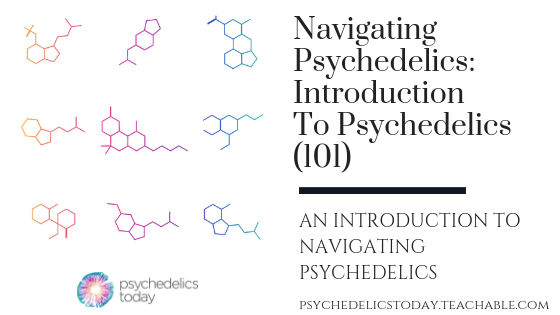
About Dr. Jenifer Talley
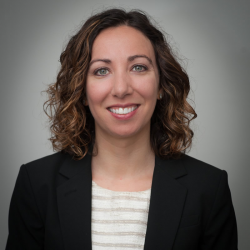
As the Assistant Director of The Center for Optimal Living, Jenifer coordinates clinical services and training activities along with providing individual psychotherapy.Together with Dr. Andrew Tatarsky, she started the first-ever Harm Reduction Psychotherapy Certificate Program. In her clinical work at The Center for Optimal Living, she provides individual psychotherapy using an integrative harm reduction framework where the focus is on developing a collaborative and compassionate relationship with my clients to promote positive change.
Download
In this episode, Joe and Kyle sit down with Renn Butler, who graduated from the second ever class of Holotropic Breathwork in 1989. During the show, they discuss topics on Breathwork, Stan Grof practices, archetypal astrology and the astrological landscape we are entering in 2019.
3 Key Points:
- Renn Butler is an Archetypal and Holotropic Astrologer since the 70’s who uses astrology in his Breathwork practice.
- Stan Grof’s Internalized Protocol includes lying down with eye shades and headphones with a sober sitter. A sober sitter is more common in therapeutic settings versus the shamanistic group settings, and Renn believes there is more benefit to a sober sitter in a personal session than a group session.
- We are moving into a Jupiter square Neptune for all of 2019. Neptune represents our soul’s yearning to reawaken to the universal field of consciousness and Jupiter amplifies whatever it touches, so we are entering into a time of opportunity for self exploration and awakening.
Support the show
- Patreon
- Leave us a review on iTunes
- Share us with your friends – favorite podcast, etc
- Join our Facebook group - Psychedelics Today group – Find the others and create community.
Navigating Psychedelics
Show Notes
About Renn
- Renn became interested in Stan Grof’s work through many conversations with Richard Tarnas in 1980, and then participated in a Grof month long session with guests like Gwen Frishkoff
- He spent much time in Esalon
- He remembers walking through the hallways where the mandalas from breathwork sessions were hung
- He has been an Archetypal/Holotropic Astrologer since the 70’s
Archetypal Astrology
- Stan Grof looked at ways to determine the content of people’s experiences in assisted psychotherapy
- Through his friendship with Richard Tarnas, he found that people’s planetary alignments or ‘transits’ corresponded in a remarkable way with their experience in a session
- “The purpose of astrology is to predict the meaning behind events rather than trying to determine the specific concrete forms they take.” - Renn
- Carl Jung coined the term archetype based on the Greek word “arche”, which means ‘the forms’
- It's the psychological meaning behind events
- Richard learned astrology by looking at his sessions and the content of the sessions and their correlation with astrological transits
- Based on his findings, he was able to predict the best days to do sessions
A Powerful Breathwork Session
- Renn had Kundalini Experiences happening for 4 years
- Transiting Pluto was conjoining his natal Neptune
- Pluto compels into being whatever archetypes it aligns with
- Neptune represents divine consciousness
- He did a 5 hour breathwork session that caused him to re-live aspects of toxic womb (disturbances of intrauterine life)
- Pluto can help clear out disturbances of the psyche
- At the end of the session, he felt way more cleared out than he did before
It resolved his Kundalini episode that he was in for the last few years
Kundalini Awakenings
- Some describe it as energy moving up the spine or chakra
- It means to clear out leftover traumatic baggage in the psyche
- People can have emotional outbursts and start crying or screaming as they discharge the energy
- Afterward, they will care what happens to the ecosystem and around them and want to be a part of the solution
Spiritual Emergence and Psychosis
- Joe asks when to tell the difference between knowing if someone is going through a Spiritual Emergence or needs hospitalization
- Renn responds saying you need to look for if the person is taking responsibility for their healing versus projecting.
- Projecting would be someone saying “You guys are trying to poison me” versus taking responsibility and saying “I’m feeling toxic feelings inside myself”
- Free Webinar on Spiritual Emergence and Psychosis
- Renn mentions a woman who did 90 LSD sessions with Stan Grof
- “The greatest therapeutic outcomes exist with intelligent well established individuals whose lives become boring and rigid in routine” - Stan Grof
Current Astrological Alignments
- The Astrological Alignments for the next few years are supercharged
- Uranus square Pluto - a powerful set of archetypes
- The last time this happened was the end of the 60’s
- Richard Tarnas calls it the ‘sunset effect’, colors will saturate the sky in the archetypal realm
- Many people are going to have dramatic healing breakthroughs and openings until 2020
- For those who are a bit skeptical about astrology, Renn suggest reading newer texts;
Astrological Transits in Relation to Breathwork
- Richard’s correlation of the outer planets Saturn, Uranus, Neptune and Pluto with Grof’s 4 perinatal matrices shows the process of revolutionizing astrology
- Carl Jung would do chart work before seeing all of his patients
- He would try to find transits with Jupiter, Uranus, Venus, etc
- There are no astrological alignments that would be too dangerous to do journey-work during
- But Renn says it's like putting up the lightning rod during certain transits during breathwork
- “Lie back and let the mother give birth to you” - Renn
- Renn says it's safer if you are on your back during journey work versus walking around and facing gravity and falling or hurting yourself
Grof Internalized Protocol
- One patient at a time (sitter, breather team) to lie down, wear eye shades, and listen to music through headphones
- The sitter agrees not to judge or direct the process or abandon the process
- You can expect miracles with this type of protocol
- You can't face this material by yourself, you really need people you trust, who are sober and not doing a substance, one person at a time
- Renn says the ayahuasca revolution has brought a lot of greatness to the western world, but the shamanic traditions usually meant that the shaman drinks with the clients to have a magical insight into the users psyche
Sitter Role
- In a therapeutic framework, the sitter is sober and lets the client do all of the work, and the sitter is there to assist, but not to interfere with the process
- Stan describes it as a way to maximize the benefits and minimize the risks
- Renn brings up an example of 3 people doing mushrooms together
- One person might be feeling aggressive, and another person might feel like a baby wanting to be held
- The aggressive person won't want to be doing any cuddling
- One person does the catalyst, and the other 2 support them, and then the next time they rotate
- Renn thinks one deep session is more beneficial than 3 ‘half-assed’ sessions
Interruptions During Sessions
- Some people have a fear that their experience may interrupt another person's experience
- Renn says that if someone is laughing or screaming or crying that he understands it is just a part of the universe of the way things just are
- He is shocked to hear stories about people having a loud experience getting taken out away from the rest of the group and told to contain themselves
- Kyle mentions that sounds usually aren't a bother, and the loud music helps
- But it's talking, English words that bring people out of a session
- People can have great ayahuasca ceremonies, and then they think that ayahuasca is the best psychedelic out there
- Renn says that all psychedelics are great tools
- But he encourages people to try breathwork and this solo session style healing
- Joe says he dreams of a place where shamanism takes a look at the solo process and maybe not always the group process, that all cultures can combine our knowledge for the best result
2019
-
- We are moving into a Jupiter square Neptune for all of 2019, 90 degrees between Jupiter and Neptune
- Neptune represents our soul’s yearning to reawaken to the larger world’s soul, to the universal field of consciousness
- Jupiter amplifies whatever it touches
- This presents a large opportunity for self exploration, with a feeling of deeper cosmic safety
- “It seems like our psyche’s wait until things are safe for the deepest material to surface.” - Renn
- Renn says it's good to focus on death so that we can constantly keep our priorities straight
- We are moving into a Jupiter square Neptune for all of 2019, 90 degrees between Jupiter and Neptune
Links
- A Week of Holotropic Breathwork, Dreamwork, Archetypal Astrology, and Visits to Mayan Ruins in Tulum, Mexico
- Archetypal Astrology Consultations
- Renn's Books
Check out our online course, "Introduction to Psychedelics"
About Renn
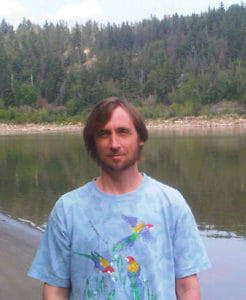
Following a B.A. in English and Religious Studies from the University of Alberta, Renn Butler lived at the Esalen Institute in California for 2½ years where he became deeply immersed in the transpersonal psychology of Stanislav Grof and the emerging archetypal astrology of Richard Tarnas. He completed training as a Holotropic Breathwork facilitator with Stan and Christina Grof in 1989 and has facilitated many workshops in Victoria, Canada. His research includes over three decades of archetypal-astrology consultations and Holotropic Breathwork workshops, and thirty-five years of Jungian-Grofian dreamwork.

